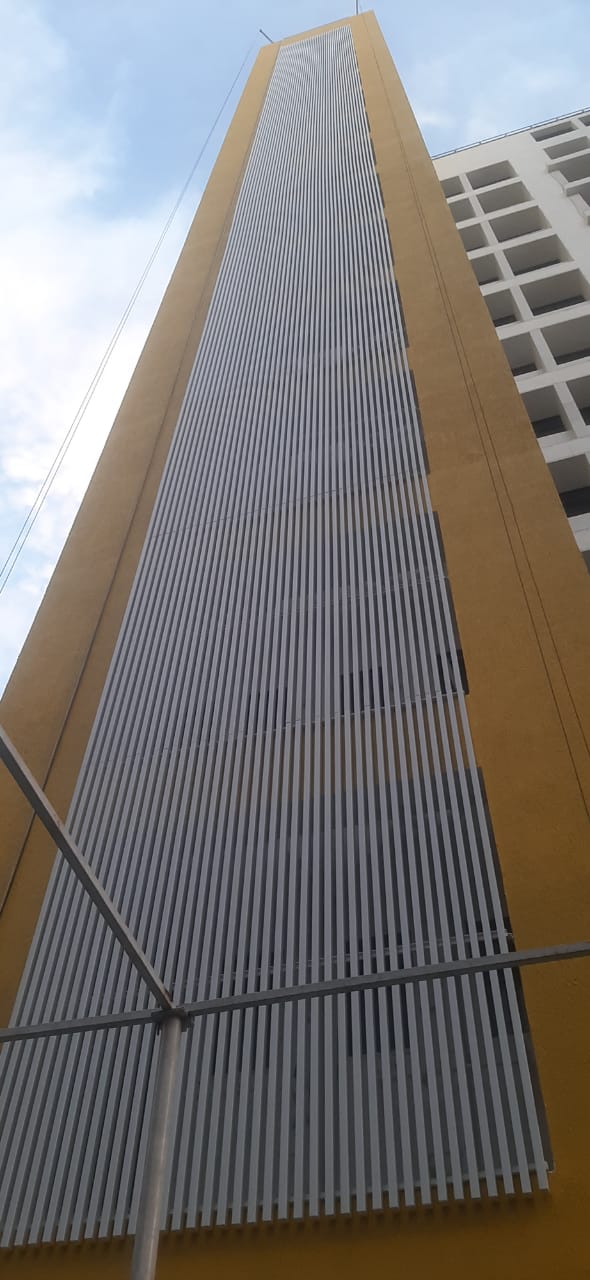Sustainable construction is no longer just a trend—it’s a necessity. Architects, builders, and developers are increasingly looking for eco-friendly materials and design solutions that align with global green building standards like LEED, IGBC, and GRIHA. One such architectural element gaining popularity for its functional and environmental benefits is uPVC fins.
Whether it’s for aesthetics, energy efficiency, or sustainability, uPVC fins and uPVC louvers are making a strong mark in the green building movement. But how exactly do they contribute to green building certifications? Let’s dive deeper.
Understanding uPVC Fins and Louvers
Before we explore their benefits, it’s essential to understand what these elements are:
- uPVC Fins: These are vertical or horizontal architectural slats fixed on building facades. They help in controlling sunlight, improving ventilation, and enhancing the overall appearance of the structure.
- uPVC Louvers: These are slatted systems that can be fixed or adjustable, used for sun shading, privacy screening, and airflow management.
Both elements serve a dual purpose: enhancing architectural design and contributing to environmental sustainability.
Green Building Certifications: The Basics
Green building certification programs assess the sustainability of a structure based on several criteria:
- Energy efficiency
- Water conservation
- Material sustainability
- Indoor environmental quality
- Innovation and design
By incorporating uPVC fins and uPVC louvers, architects and builders can accumulate valuable points under these categories, accelerating the path toward certification.
1. Improved Energy Efficiency
uPVC fins significantly reduce the building’s heat gain by minimizing direct exposure to sunlight. By acting as shading devices, they lower indoor temperatures, decreasing the need for air conditioning. This leads to:
- Reduced electricity consumption
- Lower carbon footprint
- Better HVAC performance
Most green certifications, including LEED and IGBC, reward designs that demonstrate improved energy performance, making uPVC fins an excellent addition for point accumulation.
2. Enhanced Daylighting and Reduced Glare
Natural light is a key factor in sustainable design. However, too much sunlight can cause glare and overheating. uPVC louvers allow diffused daylight into the building while keeping direct sun rays out.
This strategic light control:
- Improves occupant comfort
- Reduces dependency on artificial lighting during the day
- Supports the Indoor Environmental Quality (IEQ) credit in green certifications
3. Recyclable and Eco-Friendly Material
uPVC (Unplasticized Polyvinyl Chloride) is a recyclable and non-toxic material. It has a low environmental impact compared to traditional building materials like aluminum or steel. A responsible uPVC fins supplier ensures that the material used is:
- Lead-free
- RoHS-compliant
- Manufactured using environmentally safe processes
This aligns with the “Materials and Resources” section of green building rating systems that reward the use of sustainable, low-impact materials.
4. Thermal and Acoustic Comfort
Beyond blocking heat, uPVC fins also contribute to acoustic insulation. By shielding the interior from external noise and temperature variations, they enhance the overall comfort of occupants—a factor that’s highly regarded in green building certification systems like WELL and IGBC.
5. Water-Resistant and Low Maintenance
Another advantage of choosing uPVC louvers and fins is their low maintenance requirements. Unlike wood or metal, uPVC doesn’t corrode, rot, or require regular painting. This means:
- Longer product life cycle
- Lower operational and maintenance costs
- Reduced use of harmful chemicals like paint and varnish
Long-lasting, maintenance-free materials contribute positively under the “Lifecycle Analysis” or “Durability” segments in many green certification programs.
6. Aesthetic Appeal with Functional Value
A beautifully designed building that’s also sustainable? That’s exactly what uPVC fins offer. Available in various sizes, colors, and profiles, they give architects the freedom to create striking facades while maintaining sustainability.
A knowledgeable uPVC fins supplier will offer customizable designs and expert consultation to balance design with performance—ensuring your project meets both aesthetic and environmental goals.
7. Contribution to Innovation in Design
LEED and other rating systems often offer points for innovative design practices. The creative use of uPVC louvers in dynamic facades, green walls, or modular sun-shading systems can add innovation credits to your certification score.
Choosing the Right uPVC Fins Supplier Matters
To maximize these benefits, it’s crucial to work with an experienced uPVC fins supplier who understands sustainability standards and can provide:
- Eco-certified materials
- Tailor-made solutions for energy modeling
- End-to-end support from design to installation
A trusted supplier will not only help you select the right type of uPVC louvers or fins but also assist in generating documentation needed for green building submissions.
Green buildings are not just about reducing environmental impact—they’re about building smarter, more efficient, and more comfortable spaces. uPVC fins and uPVC louvers seamlessly support these goals by enhancing energy performance, reducing heat gain, and promoting sustainable architecture.
If you’re planning your next green building project, consider integrating uPVC fins early in the design phase. Partner with a reliable uPVC fins supplier to ensure you get the best of both worlds: eco-friendly performance and architectural elegance.
Looking to source high-quality uPVC fins and louvers for your project?
Choose a supplier that understands your sustainability vision and delivers excellence with every panel.




